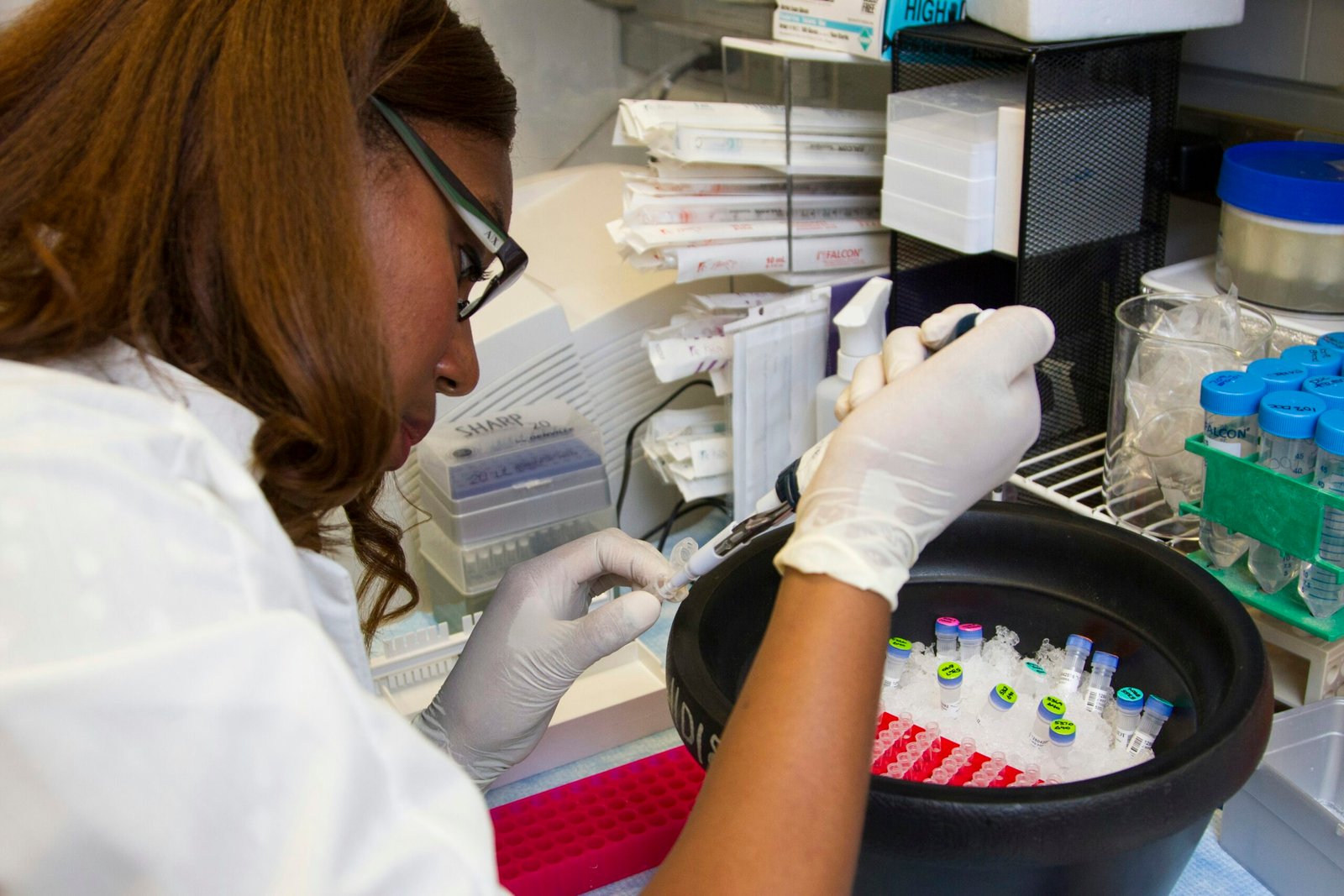Have you ever wondered if certain environmental factors have an impact on the development of gout in individuals who are genetically predisposed? Gout, a form of arthritis characterized by severe joint pain, is commonly associated with lifestyle and diet choices. However, recent studies suggest that environmental factors may also play a significant role in the development of this condition. This article explores the link between genetics and environmental influences, shedding light on the potential factors that could contribute to the development of gout in those with a genetic predisposition. So, if you're curious to learn more about how our surroundings can interact with our genetic makeup and affect our health, keep reading!

Understanding Gout
Gout is a form of arthritis that occurs when there is a buildup of uric acid crystals in the joints. This condition is characterized by sudden and severe pain, redness, and swelling in the affected joint. Gout typically affects the big toe, but it can also occur in other joints such as the ankles, knees, and wrists. It is important to understand the causes, symptoms, and effects of gout in order to effectively manage and prevent this condition.
Definition of gout
Gout is a type of inflammatory arthritis that results from the deposition of uric acid crystals in the joints. Uric acid is a waste product that is produced when the body breaks down purines, which are substances found in certain foods and beverages. When the level of uric acid in the blood becomes too high, it can form crystals that accumulate in the joints, leading to inflammation and pain.
Causes and symptoms of gout
The primary cause of gout is an elevated level of uric acid in the blood, a condition known as hyperuricemia. However, not everyone with elevated uric acid levels will develop gout, indicating that other factors contribute to the development of this condition. Some common risk factors for gout include obesity, high blood pressure, diabetes, kidney disease, and a diet high in purines.
The symptoms of gout typically occur suddenly and without warning. The affected joint becomes tender, swollen, red, and extremely painful. The pain associated with gout is often described as throbbing and can be severe enough to awaken you from sleep. These symptoms usually last for a few days to a week and then subside, but without appropriate treatment, they are likely to recur.
How gout affects the body
Gout not only causes acute pain and inflammation in the joints but can also have long-term effects on the body. Persistent gout can lead to joint damage and deformity, limiting mobility and function. Additionally, chronic inflammation associated with gout can contribute to the development of other health conditions, such as heart disease, hypertension, and kidney stones. It is important to manage gout effectively to prevent these complications and maintain overall health.
Genetic Predisposition to Gout
Although lifestyle factors play a significant role in gout development, genetics also has a strong influence on an individual's susceptibility to this condition. Understanding the role of genetics in gout can help identify individuals at high risk and develop targeted prevention strategies.
Role of genetics in gout
Genetics plays a significant role in gout, with studies suggesting that up to 60% of gout risk is attributable to genetic factors. Certain genetic variations can affect the body's ability to regulate uric acid levels, making individuals more susceptible to gout. These variations can impact the function of genes involved in uric acid metabolism, such as the SLC2A9 gene, which codes for a urate transporter protein.
Identifying genetic markers of gout
Researchers have made significant progress in identifying specific genetic markers associated with gout. Genome-wide association studies (GWAS) have identified several single-nucleotide polymorphisms (SNPs) that are associated with an increased risk of developing gout. These SNPs are located in genes related to urate metabolism, inflammation, and renal function. By analyzing an individual's genetic profile, it may be possible to identify those at higher risk of developing gout.
Studies linking genetics to gout development
Numerous studies have provided compelling evidence supporting the link between genetics and gout development. These studies have not only identified specific genetic variants associated with gout but also examined the impact of gene-environment interactions on gout risk. Understanding the interplay between genetics and environmental factors can provide valuable insights into the development of gout and guide personalized prevention and treatment strategies.
Overview of Environmental Factors
While genetics plays a crucial role in gout susceptibility, environmental factors also contribute significantly to the development of this condition. Environmental factors encompass a wide range of influences, including diet, lifestyle choices, occupational activities, geographical location, and exposure to certain substances.
Definition and examples of environmental factors
Environmental factors refer to external factors that can impact an individual's health and well-being. These factors can include dietary choices, physical activity levels, exposure to toxins or pollutants, and even the climate or geographical location in which a person lives. Essentially, anything in an individual's external environment that can influence their health falls under the umbrella of environmental factors.
How environmental factors influence health
Environmental factors can have a direct impact on an individual's health by affecting their genetics and physiological function. For example, a diet high in purine-rich foods can increase the level of uric acid in the blood, contributing to gout development. Similarly, exposure to certain toxins or pollutants in the environment can lead to oxidative stress and inflammation, predisposing individuals to various diseases, including gout.
Interplay between genetics and environment
The interplay between genetics and environmental factors is complex and can significantly influence disease development. While genetics may predispose an individual to certain conditions, it is often the environmental triggers that determine whether the disease manifests. Individuals with a genetic predisposition to gout may be more susceptible to the effects of specific environmental factors, such as a high-purine diet or exposure to certain toxins. Understanding this interplay is crucial for developing effective prevention and treatment strategies.
Environmental Factors and Gout
Environmental factors have been identified as significant contributors to the development of gout. Various elements in an individual's environment can interact with their genetic predisposition to increase the likelihood of developing gout. By exploring the connection between gout and environmental factors, we can gain insights into potential risk factors and develop targeted interventions.
Exploring the connection between environmental factors and gout
Several environmental factors have been implicated in the development of gout. Dietary choices, such as consuming foods high in purines, can lead to increased uric acid production and the subsequent deposition of uric acid crystals in the joints. Other factors, such as obesity, alcohol consumption, smoking, and chronic stress, can also contribute to gout development.
Specific environmental factors influencing gout development
Certain environmental factors have been found to have a particularly strong influence on the development of gout. For example, excessive alcohol consumption, especially beer, has been linked to an increased risk of gout. Obesity is another significant environmental factor, as it is associated with elevated uric acid levels and insulin resistance. Additionally, exposure to chronic stress can increase the likelihood of developing gout, possibly through the activation of inflammatory pathways.
Existing research on environmental impacts on gout
Numerous studies have investigated the impact of environmental factors on gout development. These studies have consistently shown that dietary choices, lifestyle factors, occupational activities, and geographical location are all important contributors to gout risk. By identifying these environmental factors and understanding their mechanisms of action, researchers can develop targeted interventions aimed at preventing gout in at-risk individuals.

Impact of Diet on Gout
Diet plays a significant role in gout development, and certain foods and beverages have been shown to increase the risk of gout in genetically predisposed individuals. Understanding the correlation between dietary choices and gout can help individuals make informed decisions about their diet and reduce the likelihood of gout attacks.
Correlation between dietary choices and gout risks
Several dietary factors have been linked to an increased risk of gout. Foods and beverages that are high in purines, such as red meat, organ meats, seafood, and alcoholic beverages, can trigger gout attacks by increasing uric acid production. Additionally, a diet high in fructose, found in sugary drinks and processed foods, has been associated with an increased risk of gout.
Specific foods and beverages that increase gout likelihood
Certain foods and beverages have been found to have a particularly strong association with increased gout risk. Red meat, especially organ meats like liver and kidneys, are high in purines and can significantly raise uric acid levels. Seafood, especially shellfish like shrimp and mussels, is also high in purines and should be consumed in moderation by individuals predisposed to gout. Alcoholic beverages, especially beer, can increase uric acid production and impair its excretion, making it a common trigger for gout attacks.
Role of obesity in gout development
Obesity is a significant risk factor for gout, as it can lead to elevated uric acid levels and insulin resistance. Adipose tissue releases inflammatory cytokines and hormones that promote insulin resistance and uric acid production. Additionally, obesity is associated with other conditions like high blood pressure and diabetes, which further increase the risk of gout. Managing weight through a balanced diet and regular exercise is crucial in preventing gout attacks in individuals predisposed to the condition.
Influence of Lifestyle Choices
Several lifestyle choices can significantly impact gout development, and understanding their effects can help individuals make informed decisions to reduce their risk. Factors such as alcohol consumption, smoking, exercise levels, and chronic stress can all influence the likelihood of gout attacks.
The effects of alcohol and smoking
Excessive alcohol consumption, particularly of beer and spirits, has been strongly associated with an increased risk of gout. Alcohol can increase uric acid production and impair its excretion, leading to higher uric acid levels in the blood. Smoking, on the other hand, has been shown to decrease uric acid excretion, further contributing to gout development. Both alcohol and smoking should be avoided or moderated by individuals at risk of gout.
Impact of exercise levels and physical activity
Regular physical activity and exercise have been shown to have a positive impact on gout risk. Exercise can help maintain a healthy weight, improve insulin sensitivity, and reduce inflammation, all of which contribute to lowering the risk of gout. Additionally, staying active can help maintain joint mobility and prevent stiffness, which is especially important for individuals with gout. Engaging in regular exercise, such as walking, swimming, or cycling, can be highly beneficial in managing gout.
Gout and chronic stress
Chronic stress has been associated with an increased risk of developing gout attacks. Stress triggers hormonal and physiologic changes in the body, including increased inflammation and uric acid production. Additionally, stress can lead to poor lifestyle choices, such as unhealthy dietary patterns, excessive alcohol consumption, and inadequate sleep, which can further exacerbate gout. Implementing stress management techniques, such as exercise, relaxation techniques, and seeking support, is crucial in managing gout and preventing flare-ups.

Occupational and Geographic Factors
Certain job-related activities and geographical location can influence the development of gout in genetically predisposed individuals. Understanding these factors can help individuals make informed decisions about their occupation and living environment to reduce the risk of gout attacks.
How job-related activities may contribute to gout
Certain job-related activities can increase the risk of gout due to their impact on joint stress and physical strain. Occupations that require repetitive motions, involve heavy lifting, or have prolonged periods of standing or walking can put excessive strain on the joints, leading to the development of gout. It is essential for individuals working in physically demanding jobs to take regular breaks, practice proper ergonomics, and seek medical treatment when necessary to prevent gout attacks.
The role of geographical location and climate on gout
Geographical location and climate have also been found to have an influence on gout development. Studies have shown that gout is more prevalent in regions with higher average temperatures, likely due to increased precipitation and hydration. Warm and humid climates can contribute to dehydration and a higher concentration of uric acid in the blood, increasing the likelihood of gout attacks. Additionally, certain geographical areas may have higher consumption rates of purine-rich foods or exposure to other environmental factors that increase gout risk. Understanding these regional factors can help individuals make informed decisions about their lifestyle and environment to minimize gout risks.
Disease Correlation and Comorbidity
Gout has been found to be associated with several other diseases, which can have an impact on gout development and management. Understanding these correlations and comorbidities is crucial in providing comprehensive care for individuals with gout.
The relationship between gout and other diseases
Gout has been linked to an increased risk of several other health conditions. For example, individuals with gout are at higher risk of developing cardiovascular diseases, such as coronary artery disease and hypertension. The chronic inflammation associated with gout can contribute to the development of these conditions. Gout has also been associated with an increased risk of kidney stones, diabetes, and metabolic syndrome. Recognizing these correlations allows healthcare providers to provide holistic care and monitor individuals with gout for the development of comorbidities.
Common comorbidities in gout patients
Several comorbidities are commonly observed in individuals with gout. Hypertension, or high blood pressure, is frequently present in gout patients, likely due to shared risk factors and the effect of chronic inflammation. Metabolic syndrome, a cluster of conditions including abdominal obesity, high blood pressure, high blood sugar, and abnormal cholesterol levels, is also commonly associated with gout. Additionally, kidney disease and cardiovascular diseases are prevalent comorbidities in individuals with gout. Managing these comorbidities is essential in preventing complications and improving overall health outcomes in individuals with gout.
How comorbid diseases may influence gout development
Comorbid diseases can influence the development and management of gout. Conditions such as hypertension, diabetes, and kidney disease can directly impact uric acid levels and increase the risk of gout attacks. Additionally, medications used to treat comorbid conditions, such as diuretics or certain antihypertensive medications, may have adverse effects on uric acid levels and contribute to gout development. Integrating care for comorbid diseases and gout is vital for optimizing treatment and preventing complications.
Prevention and Treatment of Gout
Prevention and treatment of gout involve a comprehensive approach that addresses both genetic susceptibility and environmental factors. By making lifestyle modifications, seeking appropriate treatment, and considering personalized prevention strategies, individuals can effectively manage and reduce the risk of gout attacks.
Lifestyle modifications to reduce gout risk
Lifestyle modifications play a crucial role in preventing gout attacks and managing the condition. These modifications include maintaining a healthy weight, adopting a balanced diet low in purine-rich foods, limiting alcohol consumption, quitting smoking, engaging in regular physical activity, and managing stress levels. By making these changes, individuals can lower uric acid levels in the blood, reduce inflammation, and minimize the risk of gout attacks.
Available treatments for gout
Several medications are available to treat gout and manage its symptoms. Nonsteroidal anti-inflammatory drugs (NSAIDs) and colchicine are commonly used to relieve pain and reduce inflammation during acute gout attacks. Allopurinol and febuxostat are urate-lowering drugs that can be prescribed to lower uric acid levels in the blood and prevent future gout attacks. Additionally, lifestyle modifications, such as dietary changes and weight management, are often recommended as an integral part of gout treatment.
Research on prevention strategies for genetically predisposed individuals
Research is continuously expanding our understanding of gout development and providing insights into personalized prevention strategies. Studies have explored the impact of genetic variants on gout risk and analyzed gene-environment interactions to develop targeted interventions. Ongoing research aims to identify individuals at high risk of developing gout based on their genetic profile and provide personalized recommendations regarding lifestyle modifications and treatment options. By considering an individual's genetic predisposition to gout, we can tailor prevention strategies to their specific needs, leading to better outcomes and improved quality of life.
Conclusion
Understanding the influence of environmental factors on gout in genetically predisposed individuals is crucial for effectively managing and preventing this condition. While genetics plays a significant role in gout susceptibility, environmental factors such as diet, lifestyle choices, occupational activities, geographical location, and comorbid diseases can significantly impact gout development. By recognizing and addressing these factors, individuals can reduce the risk of gout attacks and associated complications. Ongoing research on the interplay between genetics and environment will continue to shape gout management strategies and improve outcomes for individuals at risk of this condition.
The future of gout research lies in further unraveling the complex interactions between genetics and environmental factors. Advancements in genetic testing and personalized medicine offer promising avenues for identifying individuals at high risk of gout and developing tailored interventions. Additionally, research exploring innovative prevention strategies and targeted treatments will contribute to better outcomes for individuals genetically predisposed to gout.
For individuals genetically predisposed to gout, understanding the importance of environmental influences is critical in making informed choices to minimize their risk. By implementing lifestyle modifications, seeking appropriate treatment, and staying informed about the latest research findings, individuals can take control of their health and effectively manage gout.